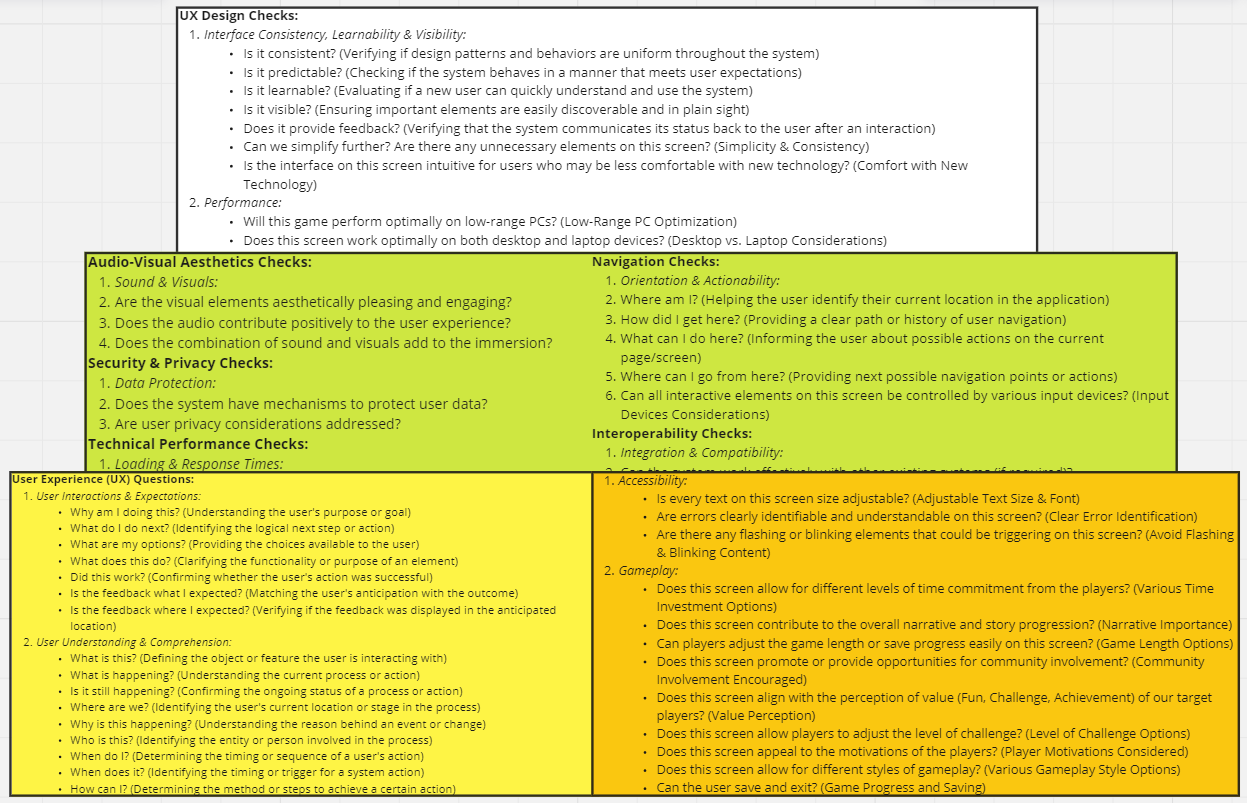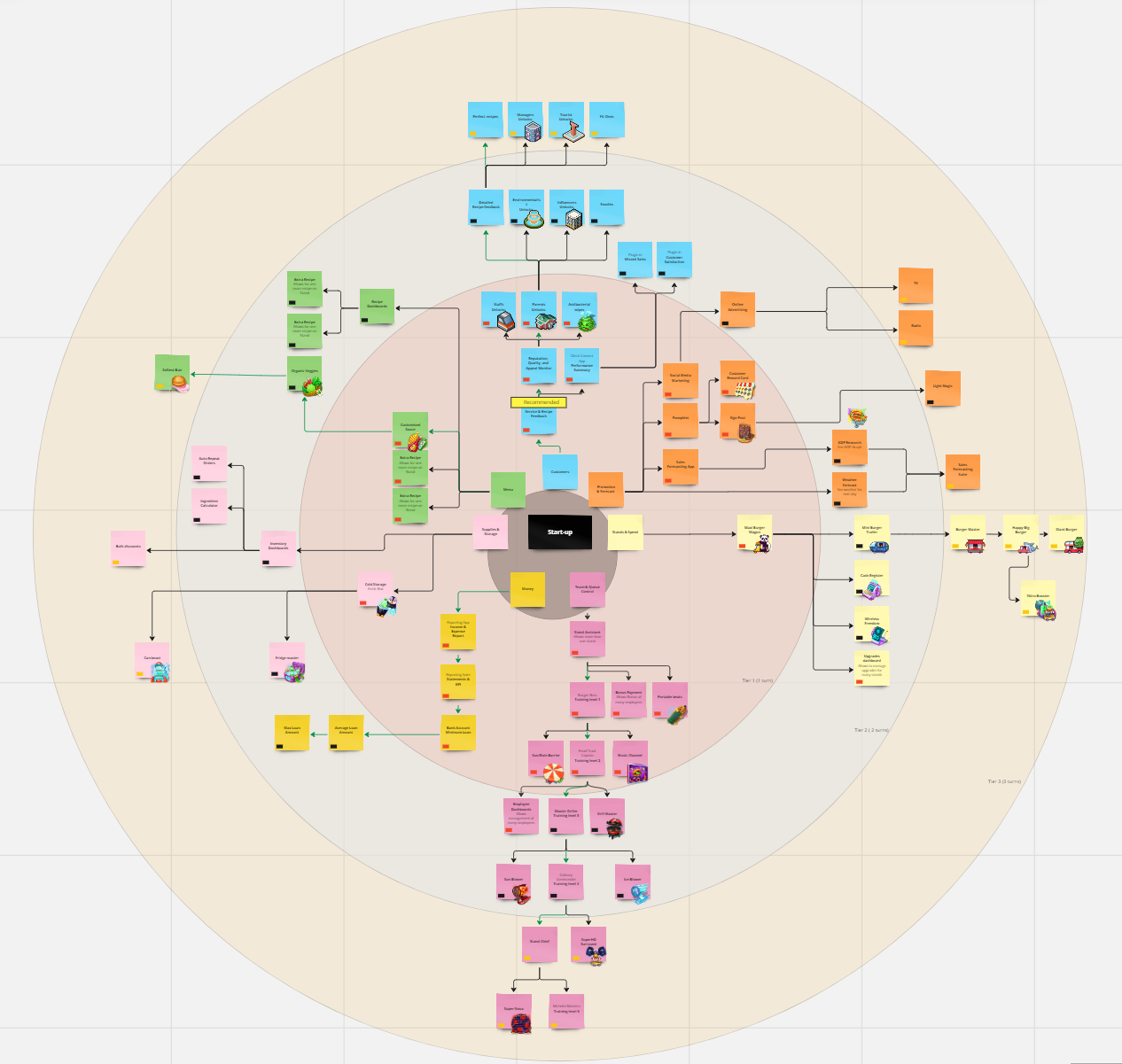Greetings, 👋
There’s no denying that User Experience (UX) plays a huge role in video gaming. But when it comes to PC strategy games, its importance skyrockets 🚀 to a whole new level!
Why so?
Because strategy games demand a fascinating mix of careful planning, insightful decision-making, and a deep understanding of intricate game mechanics.
A well-crafted UX is the only way to turn this complex dance into an engaging challenge, making the experience of victory even more satisfying. 🏆

That’s why we decided to overhaul the game’s UX after noticing it was a pain point for alpha testers.
Our goal was simple but difficult:
Design a UX that welcomes all skill levels, combining intuitive design with the depth and complexity loved by expert players.
Our task was to present ample information and diverse functions clearly, while guiding players through complexity without overwhelming them. 🤯
Formulating UX Design Principles💭
Our first step was to establish a set of UX design principles. Inspired by all the invaluable feedback we received from players 💪, we brainstormed 🧠 four cardinal principles to guide our current and future design efforts. Here’s a summarized version of the principles:
- Enriched Engagement: Foster player agency and optimal interaction by providing comprehensive data for informed decision-making, and an intuitive, predictable interface.
- Immersive Feedback & Aesthetics: Use pleasing audio-visual elements with immediate, clear feedback mechanism to create a deeply resonant and immersive player experience.
- Seamless Performance & Navigation: Ensure a stable gaming experience across diverse platforms, with intuitive navigation and quick load times to maximize playtime.
- Universal Inclusivity & Community: Make the game universally enjoyable with a focus on cultural sensitivity, accessibility, and diverse gameplay styles to cater to varied demographics.

You can see the list of questions in HD here.
Ranking Game Mechanics ⚙️
The game 🎮 spans a wide range of player skill levels. Hence, reviewing all game mechanics was crucial to understand their impact across the various skill levels.
We began this process by listing all the game’s mechanics and collectively ranking 🔢 them to achieve a smooth progression curve. 📈
Here’s a cross section of some of the mechanics along with how different team members ranked them.

On aggregate, we ranked mechanics like basic recipe changes, inventory cost, stand range effects, pricing, etc., for beginner players.
More complex mechanics like Expiry, perfect recipes, service speed, employee absence, branding, and so on were ranked for intermediate to advanced players.
User Flow Analysis and Review ↙️⬇️↘️
A vital part of our redesign process was the user flow analysis. We analyzed how players navigated through the game, pinpointing 📍 areas where they struggled and areas they found most engaging.
Our goal was to identify opportunities for improvement and eliminate potential roadblocks in the user journey. The analysis helped us uncover parts of the game where players could potentially experience confusion or frustration.
One key 🗝️ revelation was that the decision-making process for new players was often overwhelming.
To counter this, we streamlined the game’s initial stages and minimized the number of choices to encourage a smoother learning curve.
Player Progression Paths 🐾
The insights from our User Flow Analysis became a foundation for developing player progression paths for new and expert players.
The main challenge we faced here was to balance complexity with accessibility. We wanted to ensure that the game was easy to pick up for beginners yet offered depth and complexity for our more seasoned players.
As we considered the needs of both beginners and expert players, we posed critical questions at each stage, such as:
- How can we ensure beginners easily grasp the game mechanics while providing room for strategic depth that expert players crave?
- How can we design the early game stages to be engaging and rewarding while keeping it challenging and intriguing for experienced players?
- How can we implement an adaptive difficulty system that responds to the player’s skill level, ensuring an optimal challenge for all players?
In trying to answer these questions, we stumbled upon the idea of a Technology Tree.
Conceptualizing the Technology Tree 🎄
Hongjing, our lead developer, was the one who recommended the Technology Tree as a solution to balance ⚖️ the complexity and accessibility of the game.
It presents a clear progression path to players while letting them strategize their advancement according to their play style and preferences. It also significantly streamlines the presentation of information in such a way that beginner players are not overwhelmed.
Drawing inspiration from the research trees in games like Civilization VI and Oxygen Not Included, we adapted the concept for Business Heroes.

You can see the live Tree on Miro.
We settled on a design that had a logical flow and offered meaningful choices to the players. Players can now choose to specialize in various aspects of their food truck business, like customer service, Sales & Forecasting, Finance, and more.
It’s an ongoing Journey ✈️
Redesigning the UX for Business Heroes is a journey full of creative problem-solving and a relentless focus on our players’ experience.
We invite you to explore our Technology Tree and, as always, we’re eager to hear your feedback. 😉
We hope you’ll enjoy this new dimension of strategy in the game as we continue to make Business Heroes a game that is truly tailored for and loved by you and all our players.
And that’s a wrap for today, Cheers 🥂
Don’t forget to Wishlist the game if you haven’t!
Live Long and Prosper 👋,
Kunal & Team
Leave a Reply